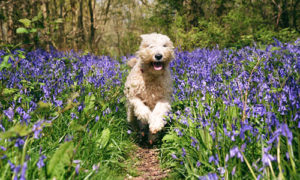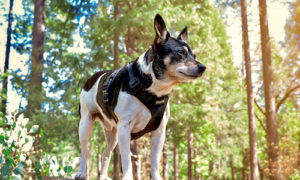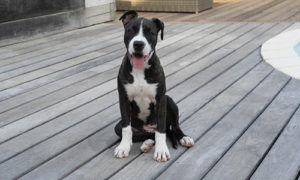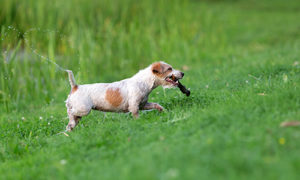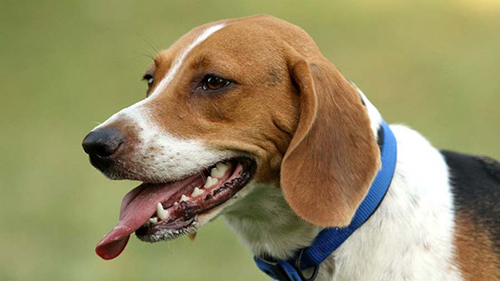
Information pertaining to Harrier Hound packs in England can be traced back to the Penistone Pack established in 1250. However, many theories have been advanced concerning the breed’s beginnings. Scenthounds developed in Europe during the Norman conquest and were used for hunting rabbits. Early records show that Foxhounds, Harrier Hounds, and Beagles were interbred and classified by size and hunting specialization rather than lineage. By selectively breeding from this basic stock, Harriers were developed to create a sturdy, slow scenthound with exceptional stamina.
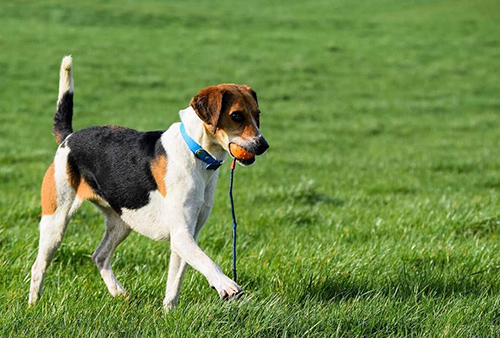
Breed Standard
The Harrier Hound is a sturdy, large-boned hound. The dog is well-balanced with slightly rectangular proportions; a long, muscular neck, a level back, and a deep chest. The feet are solid and round. Its long tail tapers to a point with a brush of hair, carried high but not over the back. The hound’s skull and muzzle are equal, and the nose is broad with well-opened nostrils. The Harrier has a gentle expression with medium-size brown or hazel eyes and low-set ears held close to the head.
Breed Facts
| Energy level | Watchdog ability | ||
| Exercise requirements | Protection ability | ||
| Playfulness | Grooming requirements | ||
| Affection level | Cold tolerance | ||
| Friendliness toward dogs | Heat tolerance | ||
| Friendliness toward other pets | Friendliness toward strangers | ||
| Ease of training |
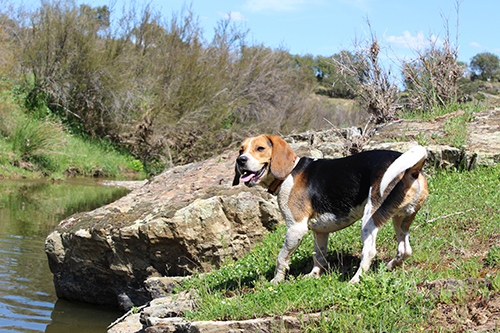
Activity level: High. The Harriet is bred to work tirelessly under all conditions; they must be exercised on lead or in a fenced-in yard. However, its need can be met with a jog or long walk and a vigorous game in the yard.
Grooming: Weekly brushing is enough to satisfy requirements. The coat is not hard to care for, only needing an occasional brushing to expel dead hair.
Coat: Dense, short, and glossy
Color: Any color but most often tricolored (black, tan, white in saddle or open markings or red and white from pale tan to deep red).
Group: Hound
Year of recognition by AKC: 1885
- Popularity: Very rare
- Family group: Scenthound
- Country of Origin: Great Britain
- Date developed: Middle Ages
- Original purpose: Trailing hares
- Today’s purpose: Trailing hare and fox
- Other names: None
Harrier Hound Temperament

Harrier Hounds are even-tempered, friendly, tolerant, and outgoing. They get along well with other animals. These dogs are people-oriented and require continuous social interaction. If bored or neglected, the dogs can become overly vocal or destructive. A Harrier Hound in the habit of howling can cause problems with the neighbors. Though they’re quick to alert in the case of intruders, they do not make good guard dogs. These hounds were traditionally bred for hunting and also do well in tracking and agility competitions. They also have exceptional problem-solving skills and are easier to train than most other hounds.
Harrier Hounds are more playful and outgoing than the Foxhound, but not as much as the Beagle. It is friendly, tolerant, and excellent with children. It loves to hunt, sniff and trail. Daily exercise in a safe area is essential. Most are reserved with strangers, and they tend to bay if bored or lonely. These dogs are very friendly pack hounds and do not do well if left alone for long periods.
Health
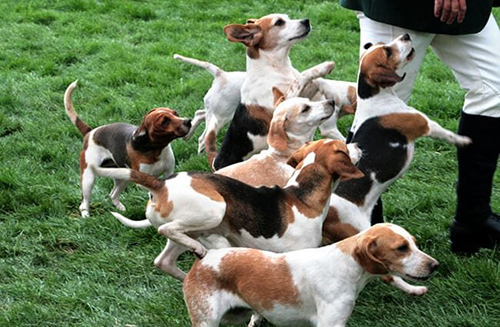
- Main concerns: CHD
- Minor problems: none
- Rarely seen: epilepsy, perianal fistula
- Recommended tests: hip, eye
- Life span: 12 to 14 years
- Weight: male – 45 to 60 pounds; female – 35 to 45 pounds
- Height: 19 to 21 inches
Breeder and Buyer’s Advice
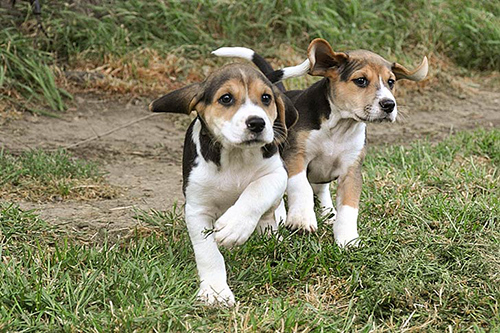
Most Harrier Hounds come from working lines. Potential owners need to be prepared for a dog with solid scenthound instincts. If not fenced or leashed, the dogs will wander and dig under fences. Training should start as early as possible to channel their instincts in the right direction. Also, they tend to overeat; therefore, food portions must be controlled. You can visit the parent’s club website for more information on breeders in your area. Do not hesitate to ask many questions and inquire about Harrier puppies for sale and puppy price.
Parent club: Harrier Club of America (http://www.harrierclubofamerica.com/); founded in 1992
Rescue: For Harrier rescue information, visit the parent club’s website.

